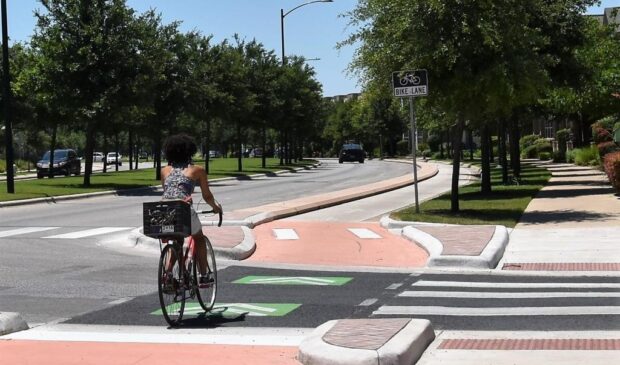Urban Transportation Commission learns of roles in mobility restructuring
Tuesday, February 27, 2024 by
Chad Swiatecki The city’s many mobility-related offices and departments were recently restructured, and the Urban Transportation Commission got an update earlier this month about how the change is expected to impact the many road projects planned across the area.
Jim Dale, interim deputy director of the Transportation and Public Works Department, spelled out the specialties of the dozens of offices handling areas such as engineering, street design, events management and capital project delivery.
With 3,500 construction permits active across the city on any given day and 8,000 lane miles of roadway across the city, he said the reorganization was judged as necessary.
Commissioner Spencer Schumacher discussed past studies and experiences in other cities showing a tendency to become overly focused on creating and maintaining programs on safety and other initiatives, rather than succeeding at delivering projects in the aggressive manner needed for Austin.
“Having Capital Delivery Services is certainly going to help that because they’re focused on project delivery, but my concern is about the active transportation, street designs, bikeways and safe routes to school,” he said. “How are you going to make sure those get the same level of attention as things like maintenance, and sometimes even a heightened level of attention? Because those are the projects the community’s really counting on. Maintenance is obviously important, operations are important, but those are the changes people are really hoping to see.”
Dale said those priorities are the responsibility of a smaller local mobility group that handles sidewalks, urban trails and bikeway projects, since they are categorized as ongoing programs that require annual funding and staff attention.
He said the new organizational structure will help city with its planning and maintenance of major bond projects, which can deteriorate and undermine public trust if they are kept in a functional state.
“One of the shifts that we’re trying to do (is) to focus more on the maintenance and not forget about that, because we’re doing a disservice to the public if we build something and we can’t maintain it. We’re not being a highly reliable organization if we can’t deliver on keeping it functioning the way it’s intended to,” he said. “We need the maintenance resources to do that, so we’re focusing more of our internal staff on maintenance and having these bond programs go to using more consultants and contractors to kind of split that workload up.”’
Concerned about the communication issues that could arise from so many groups working simultaneously on construction and other infrastructure needs across the city, Commissioner Daniel Kavelman asked Dale if there was an overall plan to prevent damage to drainage or other lines that can add to costs and disrupt the lives of residents and business.
Dale said the city’s new annual mobility plan provides a comprehensive overview to prevent disruptions.
“They’re all coordinating to make sure that those are done in a way that they’re coordinated and not disjointed, where we’re going up and digging in the street twice and we get done with this one project only to come back two months later and do a project, maybe another block down the road.”
The Austin Monitor’s work is made possible by donations from the community. Though our reporting covers donors from time to time, we are careful to keep business and editorial efforts separate while maintaining transparency. A complete list of donors is available here, and our code of ethics is explained here.
You're a community leader
And we’re honored you look to us for serious, in-depth news. You know a strong community needs local and dedicated watchdog reporting. We’re here for you and that won’t change. Now will you take the powerful next step and support our nonprofit news organization?






